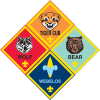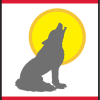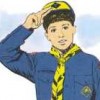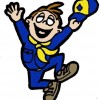
Adventures In Science
Science is all about asking “What is it?” “How does it work? and “How did it come to be that way?” This adventure helps you explore how scientists ask and answer questions and what we can learn as we try to answer our own questions. You have probably seen a person playing a scientist in a movie or on television. Sometimes they seem a little crazy, sometimes they seem to be up to no good, and, sometimes, they are the hero of the story. Adventures in Science will give you a chance to do what a scientist really does: he or she is a person who asks interesting questions and tries to figure out a good way to find an answer. Find yourself a notebook and a pen to keep track of your questions and what you learned. The time is now to create a plan and start collecting your data!
Rationale for Adventure
Taking part in this adventure will help Webelos Scouts understand and apply the role of fair investigators in acquiring and evaluating knowledge using processes associated with science.
Requirements
Webelos/AOL Elective Adventure: Adventures in Science
Do all of these:
- An experiment is a “fair test” to compare possible explanations. Draw a picture of a fair test that shows what you need to do to test a fertilizer’s effects on plant growth.
- Visit a museum, a college, a laboratory, an observatory, a zoo, an aquarium, or other facility that employs scientists. Prepare three questions ahead of time, and talk to a scientist about his or her work.
- Complete any four of the following:
- Carry out the experiment you designed for requirement 1, above. Report what you learned about the effect of fertilizer on the plants that you grew.
- Carry out the experiment you designed for requirement 1, but change the independent variable. Report what you learned about the effect of changing the variable on the plants that you grew.
- Build a model solar system. Chart the distances between the planets so that the model is to scale. Use what you learn from this requirement to explain the value of making a model in science.
- With adult supervision, build and launch a model rocket. Use the rocket to design a fair test to answer a question about force or motion.
- Create two circuits of three light bulbs and a battery. Construct one as a series circuit and the other as a parallel circuit.
- Study the night sky. Sketch the appearance of the North Star (Polaris) and the Big Dipper (part of the Ursa Major constellation) over at least six hours. Describe what you observed, and explain the meaning of your observations.
- With adult assistance, explore safe chemical reactions with household materials. Using two substances, observe what happens when the amounts of the reactants are increased.
- Explore properties of motion on a playground. How does the weight of a person affect how fast they slide down a slide or how fast a swing moves? Design a fair test to answer one of those questions.
- Read a biography of a scientist. Tell your den leader or the other members of your den what the scientist was famous for and why his or her work is important.






